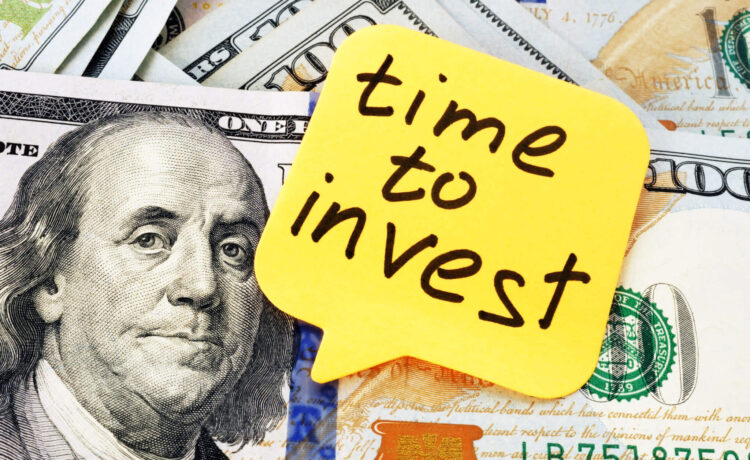You’ve got a stash of cash that’s just been idly lounging in your bank account, sipping on a metaphorical piña colada. Now, imagine shaking things up a bit and putting that money to work for you while you continue to work for yourself. Exploring the best investments is like choosing a rollercoaster ride for your money, and who doesn’t love a good rollercoaster, right? You watch the market’s twists and turns with bated breath, feeling that rush of excitement as your investments start to climb. You are creating a front-row seat to your own financial drama, and let me tell you, the plot twists are epic.
If you have no clue where to start when it comes to investing, you are not alone. In fact, a recent study shows that eight in 10 respondents draw a blank when asked to explain what a “bond” is. While nearly six in 10 claimed to be familiar with the concept of “hedge funds,” seven in 10 couldn’t define it. That’s why it pays (literally) to do the research before jumping headfirst into the world of investments.
With the constant ups and downs of the stock market, it’s no wonder it is a confusing playing field. For many, simply thinking about investing in the stock market sparks anxiety, a study reveals. But it doesn’t have to be that complicated or scary.
That’s where we come in. We have outlined some of the best investments you can make to take control of your financial future. You’re learning, strategizing, and making informed decisions. Investing turns you into a financial wizard, and the confidence boost that comes with it is utterly exhilarating. Let’s explore our options, shall we? Leave us a comment if you have any other helpful tips for investing.
The List: Best Investments, According to Experts
1. High-Yield Savings Accounts
Number one on our list of best investment options is the high-yield savings account. “High-yield savings accounts are as safe and as easy to access as your traditional brick-and-mortar savings account at a big bank, but offer a much higher return,” advises CNBC. “You can rest assured that your money is protected through FDIC insurance up to $250,000 per depositor per bank, and you can make deposits into your account at any time.”

This investment option should be the perfect gateway for future investments, allowing you to ease into the process. “These vehicles can be an excellent choice for people looking to earn competitive interest on their savings while maintaining safety and accessibility,” shares U.S. News. “As the name implies, these accounts offer higher interest rates compared with traditional savings accounts. This means your money grows faster, helping you achieve your financial goals more quickly.”
Low risk, big potential reward. Sounds easy enough. “With next to no risk of losing money plus the possibility of modest returns (depending on prevailing rates), parking your emergency fund or cash you need for near-term purchases in a high-yield savings account makes a lot of sense,” advises Forbes. “The interest rates offered by high-yield savings accounts can vary widely depending on market conditions. But you’ll never lose money on your principal and earned interest.”
2. Certificate of Deposit
The second most recommended investment option is a certificate of deposit. “Certificates of deposit are almost identical to savings accounts. Most are FDIC insured, so there’s zero risk involved. However, they are still liquid,” shares Go Banking Rates. “With a CD, you accept a time horizon when you invest — usually anywhere from one month to up to 10 years. Although a few CDs allow you to withdraw the money early without consequence, you generally must pay a penalty if you access your cash before the CD term ends.”


With a CD, you give your money one task: grow. “There are different types of CDs—like regular, bump-up, step-up, high-yield, jumbo, no-penalty and IRA CDs, for example—and different financial institutions will have different rules and fees. Certificates of deposit are insured by the FDIC up to statutory limits, which makes them a very low-risk investment option,” shares Forbes.
The longer you allow your money to sit in a CD, the higher your return. “CD terms range between 6 months and 5 years. Longer-term CDs usually have a higher APY. But you can find some short-term no penalty CDs like CIT’s 11-month no penalty CD,” explains Time.
3. Real Estate
In the real world, everyone has a need for housing, making ownership of property a great way to grow your assets. “One benefit of real estate investing is that it’s more likely to retain its value when inflation is high—sometimes even increasing. Property values can also naturally appreciate over time, but they aren’t immune to severe market conditions. Many investors favor capitalizing on property investments as a way to earn passive income,” advises Stash. “Keep in mind that real estate investing requires a significant amount of work and money upfront, and it’s highly illiquid—meaning you shouldn’t invest with money you might need easy access to in the future.”


There are several ways to invest in real estate and a popular option is to buy and home and turn it into a rental property. “Rental housing can be a great investment if you have the willingness to manage your own properties. To pursue this route, you’ll have to select the right property, finance it or buy it outright, maintain it and deal with tenants. You can do very well if you make smart purchases,” shares Bankrate.
In case you want a third option for investing in real estate, the experts at Nerd Wallet have a suggestion. “Traditional real estate investing involves buying a property and selling it later for a profit, or owning property and collecting rent as a form of fixed income. But there are several other, far more hands-off ways to invest in real estate,” suggests Nerd Wallet. “One common way is through real estate investment trusts, or REITs. These are companies that own income-generating properties (think malls, hotels, offices, etc.) and offer regular dividend payments. Real estate crowdfunding platforms, which often pool investors’ money to invest in real estate projects, have also risen in popularity in recent years.”
4. Money Market Account
When you want to save yet you may want access to your savings, a money market account may be a good fit. “Money market accounts operate on similar principles to CDs or savings accounts. They usually offer better rates than savings accounts, but they also come with more liquidity than CDs and might even let you write checks or use a debit card with the account, allowing for greater flexibility when used alongside a savings account,” advises Go Banking Rates. “If you’re using the account just to make deposits and write a monthly rent check, for instance, the MMA could be ideal.”


Money market accounts make sensible investments because there is no threat of loss if your bank happens to fail. “Money market accounts, or MMAs, are also stable vehicles for your short-term investments because they offer FDIC insurance up to the standard $250,000 per depositor per bank,” writes CNBC. “With MMAs, you can deposit cash at any time and the same six-per-statement-cycle withdrawal or transfer limit may apply, depending on your bank. MMAs offer variable interest rates and checking account features, such as check-writing privileges, debit cards, ATM access and out-of-network ATM fee reimbursements. Cash withdrawals from an ATM isn’t typically part of any imposed limit, so this allows you to always access your cash directly and immediately.”
Low risk saving and higher earnings is what we are looking for in an investment. “U.S. Bank offers a competitive money market account option that allows for easy access to your funds through a debit card or check-writing capabilities, while also earning a higher Annual Percentage Yield (APY) than a traditional savings account for low-risk saving,” shares Time.
5. Treasury Bills/Bonds
Looking for a tried and true way to grow your savings, our fifth most popular investment option is definitely the treasury bill or bond. “The next tier up from banking products in terms of higher risk and higher returns are bonds, which are essentially structured loans made to a large organization,” advises Go Banking Rates. “Treasury bonds, also known as T-bonds, are guaranteed by the full faith and credit of the U.S. government. On your end, treasuries will act just like a CD in many ways.”


When investing in the U.S. Treasury, you can be sure to have a return. “Historically, the U.S. has always paid its debts, which helps to ensure that Treasurys are the lowest-risk investments you can own,” shares Forbes. “There are a wide variety of maturities available. Treasury bills, also referred to T-bills, have maturities of four, eight, 13, 26 and 52 weeks. They are sold at a discount to their face value, and your return is the difference between the purchase price and par value at redemption. Treasury notes come in maturities of two and ten years. Treasury bonds have long maturities of 20 to 30 years, which means they carry slightly more risk than shorter-duration Treasury securities. Both bonds and notes make interest payments every six months.”
Fixed income and fixed return on investment? Sounds ideal to me! “Treasury bills, or T-bills, are a type of fixed-income security issued by the government with a short maturity term of within a year. T-bills are nearly risk-free and highly liquid, which means they are very safe places to park the cash you’ll need soon,” writes CNBC. “Keep in mind, however, that T-bill returns typically react inversely with the Federal Reserve benchmark rate; a higher rate set by the Fed means lower returns on T-bills.”
Which investment option will you try first? Leave a comment to let us know!
You might also be interested in:
Sources:
Note: This article was not paid for nor sponsored. StudyFinds is not connected to nor partnered with any of the brands mentioned and receives no compensation for its recommendations. This article may contain affiliate links in which we receive a commission if you make a purchase.
















